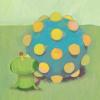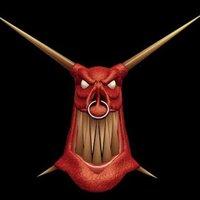I know what I'm asking might be too much, but I figured the people on this board would be a good choice to at least point me towards somewhere that can tell me.
Anyway, I'm trying to make a game which simulates the human body (and preferably other animals too) for the purposes of combat. I'd like something very similar to Dwarf Fortress adventure mode fighting. I'd like to model each part of the body - upper and lower body, upper and lower arms, upper and lower legs and the head - and what organs, arteries, nerves and the other things are likely to be damaged if the enemy hits for example, in the leg with a sword, or with a blunt weapon, or if they hit the floor from a height. I'd like to know how much fat protects people from such impacts, how much pain/ nausea is caused by what being damaged, what kind of damage can even occur (can bones be bruised??) and what order things are in, from the top layer eg. skin will be hit first, then fat, then the arteries or bones or nerves or... you can tell I'm not a biologist.
Basically I want to know the damage different forces on the body, based on impact size, weight and momentum etc. can cause to the body.
Asking for straight up answers to all of these questions would be asking too much, so I'd really like some kind of online resource, preferably as simple as possible; although given the detail I'd like, I can't imagine that's going to happen.
Any pointers would be great, because I'm really drawing a blank. How Dwarf Fortress managed to model this in such great detail is beyond me.
Thanks in advance :)
Modelling the Human Body for Combat
I've not played dwarf fortress so I couldn't tell you anything about that game.
However, the information you are looking for can be found in medical texts and studies. Especially ones to do with trauma causing things. You might look at car safety studies, and other things along those lines.
I would almost wager that Dwarf Fortress used a series of tables to give the illusion of accuracy. (conjecture). The idea being that your table has a large number of possible outcomes when a certain area is hit by a certain type of weapon. Things like impact, fat absorption, etc. Simply adjust the random roll on the table up or down. (Harder impact moves the percentage roll up leading to more serious injuries, while fat would move the percentage roll down, offering "protection"
However, the information you are looking for can be found in medical texts and studies. Especially ones to do with trauma causing things. You might look at car safety studies, and other things along those lines.
I would almost wager that Dwarf Fortress used a series of tables to give the illusion of accuracy. (conjecture). The idea being that your table has a large number of possible outcomes when a certain area is hit by a certain type of weapon. Things like impact, fat absorption, etc. Simply adjust the random roll on the table up or down. (Harder impact moves the percentage roll up leading to more serious injuries, while fat would move the percentage roll down, offering "protection"
Ideas presented here are free. They are presented for the community to use how they see fit. All I ask is just a thanks if they should be used.
Read:
http://www.classicalfencing.com/articles/bloody.php
http://www.classicalfencing.com/articles/kill2.php
http://www.classicalfencing.com/articles/bloody.php
http://www.classicalfencing.com/articles/kill2.php
Neat links, Stroppy. Thanks.
As far as Dwarf Fortress goes, it's got its share of flaws. I've lost a couple dwarves to fractured lungs, for instance. That's a really robust system, though, and it's getting better all the time. The way he does it is a lot like a flow chart: The different parts are linked together in a branching network, with the upper body being linked to the shoulder, which is tagged as a joint, and then the upper arm, elbow, lower arm, wrist, hand, and then several finger entries, all of which have the appropriate associations.
The materials got a big boost this year, and now Tarn has a whole library of different stuff that things are made of, so a thigh containst layers of skin, fat, muscle and bone, all of which have different properties regarding their ability to cut, dent, transfer blunt force trauma, bleed, burn or melt. Each attack that lands faces a series of dice rolls: First it's tested against the armor and clothing, layer by layer. Each layer has a chance to absorb or deflect a portion of the incoming damage of each type. So if an axe has (made-up numbers here) 100 cutting damage and 50 blunt damage, a chainmail shirt might block 90 of the cut but only 5 of the blunt, inflicting 10 cut and 45 blunt on the shirt below, which deflects 5 of each. The skin then stops 2 of each in exchange for a "bruised" and "cut" tag, and passes 3 cut and 38 blunt down to the fat layer, which absorbs 2 cut and 5 blunt (depending on how fat the dwarf is) and upgrades the limb from "cut and bruised" to "torn and bruised". The last point of cut and the remaining 36 blunt hit the muscle. Since muscle is tagged as containing blood vessels, the cut damage has a dice roll to see if it severs anything important, and is otherwise absorbed by that muscle, along with 25 blunt, making the limb "torn and battered" and transmitting 11 damage to the bone, which faces a dice roll to see if it is intact, bruised, chipped, cracked, fractured, broken or shattered. The final results of the blow are reported and all that math is hidden behind a single line of text and an update to the character's status. It's a pretty serious simulation.
The upper body and head also contain organs, all made of an appropriately named and detailed organ-stuff, which are linked to various bodily functions and thus impart status ailments when they're damaged. Lung damage can lead to suffocation, a smashed kidney leads to incredible pain, nausea and blood loss, etc. That way, choking a guy doesn't just drain his HP, it damaged his trachea, which penalizes breathing, which leads to suffocation, unconsciousness and ultimately death. Even if you stop choking him, he'll remain dizzy, short of breath and agonized for some time before recovering, and his throat may be bruised and painful for days.
Flexibility is a strength, as demonstrated by the forgotten beasts we see there now, with their procedurally generated anatomy. Scales, six legs, feathery wings, two tails, three stingers, five eyes and fire breath with flesh made of steam and acidic blood can be mashed together into an unkillable undead shitstorm of a monster that rolls up and wipes you out. Fun stuff.
It's a very involved system, and it would be about a hojillion times more complex if it used a more advanced interface. The beauty of the ASCII graphics and simple controls is that I can just say, "I grab his neck with my hands and squeeze," and the game applies the effect. I can often get into a wrestling match where my right forearm has a guy's left knee in a joint lock, my left forearm is choking him, and both my hands are on his elbows. What must that look like? How hard would it be to introduce restrictions on moves based on the intuitively obvious limitations of the body?
When I saw your thread, I thought of DF first and foremost, and I can't hink of anything that comes even remotely close to it in terms of granularity of simulation. The old Fallout games would be my runner-up. I often aimed for an enemy's eyes early in a fight to blind them and gain an advantage, and on higher difficulty levels it wasn't uncommon for me to wind up with a wrecked limb or two after a tough fight. Deus Ex also had body part-specific damage, and I'd routinely have my legs blown to smithereens by a grenade and crawl around for a while before I got killed. I like that in a game, and I think it would be pretty easy to have status ailments like "lame", "anemic", "asphyxiated", "nauseated" et cetera that would reflect damage to body parts. Broken hands, twisted knees, even stubbed toes or ringing ears could factor heavily into combat.
As far as Dwarf Fortress goes, it's got its share of flaws. I've lost a couple dwarves to fractured lungs, for instance. That's a really robust system, though, and it's getting better all the time. The way he does it is a lot like a flow chart: The different parts are linked together in a branching network, with the upper body being linked to the shoulder, which is tagged as a joint, and then the upper arm, elbow, lower arm, wrist, hand, and then several finger entries, all of which have the appropriate associations.
The materials got a big boost this year, and now Tarn has a whole library of different stuff that things are made of, so a thigh containst layers of skin, fat, muscle and bone, all of which have different properties regarding their ability to cut, dent, transfer blunt force trauma, bleed, burn or melt. Each attack that lands faces a series of dice rolls: First it's tested against the armor and clothing, layer by layer. Each layer has a chance to absorb or deflect a portion of the incoming damage of each type. So if an axe has (made-up numbers here) 100 cutting damage and 50 blunt damage, a chainmail shirt might block 90 of the cut but only 5 of the blunt, inflicting 10 cut and 45 blunt on the shirt below, which deflects 5 of each. The skin then stops 2 of each in exchange for a "bruised" and "cut" tag, and passes 3 cut and 38 blunt down to the fat layer, which absorbs 2 cut and 5 blunt (depending on how fat the dwarf is) and upgrades the limb from "cut and bruised" to "torn and bruised". The last point of cut and the remaining 36 blunt hit the muscle. Since muscle is tagged as containing blood vessels, the cut damage has a dice roll to see if it severs anything important, and is otherwise absorbed by that muscle, along with 25 blunt, making the limb "torn and battered" and transmitting 11 damage to the bone, which faces a dice roll to see if it is intact, bruised, chipped, cracked, fractured, broken or shattered. The final results of the blow are reported and all that math is hidden behind a single line of text and an update to the character's status. It's a pretty serious simulation.
The upper body and head also contain organs, all made of an appropriately named and detailed organ-stuff, which are linked to various bodily functions and thus impart status ailments when they're damaged. Lung damage can lead to suffocation, a smashed kidney leads to incredible pain, nausea and blood loss, etc. That way, choking a guy doesn't just drain his HP, it damaged his trachea, which penalizes breathing, which leads to suffocation, unconsciousness and ultimately death. Even if you stop choking him, he'll remain dizzy, short of breath and agonized for some time before recovering, and his throat may be bruised and painful for days.
Flexibility is a strength, as demonstrated by the forgotten beasts we see there now, with their procedurally generated anatomy. Scales, six legs, feathery wings, two tails, three stingers, five eyes and fire breath with flesh made of steam and acidic blood can be mashed together into an unkillable undead shitstorm of a monster that rolls up and wipes you out. Fun stuff.
It's a very involved system, and it would be about a hojillion times more complex if it used a more advanced interface. The beauty of the ASCII graphics and simple controls is that I can just say, "I grab his neck with my hands and squeeze," and the game applies the effect. I can often get into a wrestling match where my right forearm has a guy's left knee in a joint lock, my left forearm is choking him, and both my hands are on his elbows. What must that look like? How hard would it be to introduce restrictions on moves based on the intuitively obvious limitations of the body?
When I saw your thread, I thought of DF first and foremost, and I can't hink of anything that comes even remotely close to it in terms of granularity of simulation. The old Fallout games would be my runner-up. I often aimed for an enemy's eyes early in a fight to blind them and gain an advantage, and on higher difficulty levels it wasn't uncommon for me to wind up with a wrecked limb or two after a tough fight. Deus Ex also had body part-specific damage, and I'd routinely have my legs blown to smithereens by a grenade and crawl around for a while before I got killed. I like that in a game, and I think it would be pretty easy to have status ailments like "lame", "anemic", "asphyxiated", "nauseated" et cetera that would reflect damage to body parts. Broken hands, twisted knees, even stubbed toes or ringing ears could factor heavily into combat.
Wow, thanks a lot Iron Chef. I couldn't have hoped for a more detailed description!
You're right about the ascii, I was planning on making the combat text based, with occasional, more detailed, pictures to help the imagination along. I love the text in DF - imagining kicking someone in the head is a lot more fulfilling than any animation I could make, and I'd like procedurally generated creatures, like you mentioned, which would be impossible for me to do animations for.
I think I'll attempt a way of limiting the whole grabbing problem you mentioned; probably by limiting it to one grab per limb.
Stroppy, those links look really helpful as well - thanks :)
Robert, that table idea looks useful. I certainly can't hope to simulate everything, so I'll probably use something similar to that at some point as well.
In the end, I think I'll try to simulate things as much as possible. It doesn't have to be realistic, but I think the more things you simulate, the easier it is to get emergent properties in games - that is, the players and game can surprise you with outcomes you didn't expect - case in point: gently heating someone until their blood boils ;) It would never happen if you didn't have a heating system and variable for when things boild.
You're right about the ascii, I was planning on making the combat text based, with occasional, more detailed, pictures to help the imagination along. I love the text in DF - imagining kicking someone in the head is a lot more fulfilling than any animation I could make, and I'd like procedurally generated creatures, like you mentioned, which would be impossible for me to do animations for.
I think I'll attempt a way of limiting the whole grabbing problem you mentioned; probably by limiting it to one grab per limb.
Stroppy, those links look really helpful as well - thanks :)
Robert, that table idea looks useful. I certainly can't hope to simulate everything, so I'll probably use something similar to that at some point as well.
In the end, I think I'll try to simulate things as much as possible. It doesn't have to be realistic, but I think the more things you simulate, the easier it is to get emergent properties in games - that is, the players and game can surprise you with outcomes you didn't expect - case in point: gently heating someone until their blood boils ;) It would never happen if you didn't have a heating system and variable for when things boild.
This topic is closed to new replies.
Advertisement
Popular Topics
Advertisement
Recommended Tutorials
Advertisement










